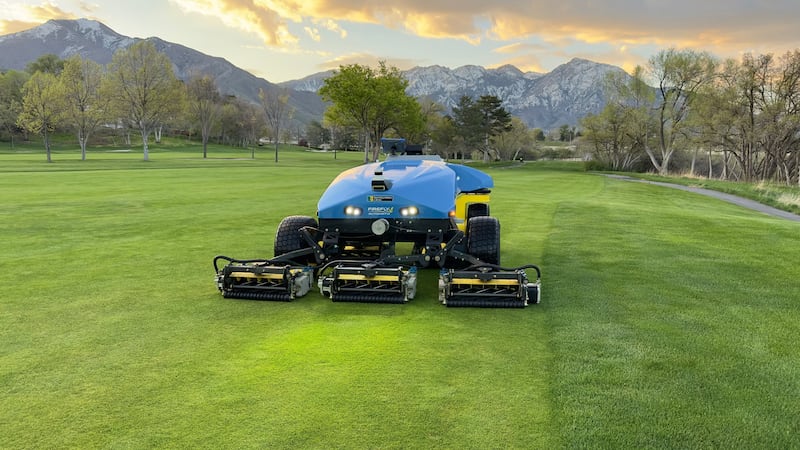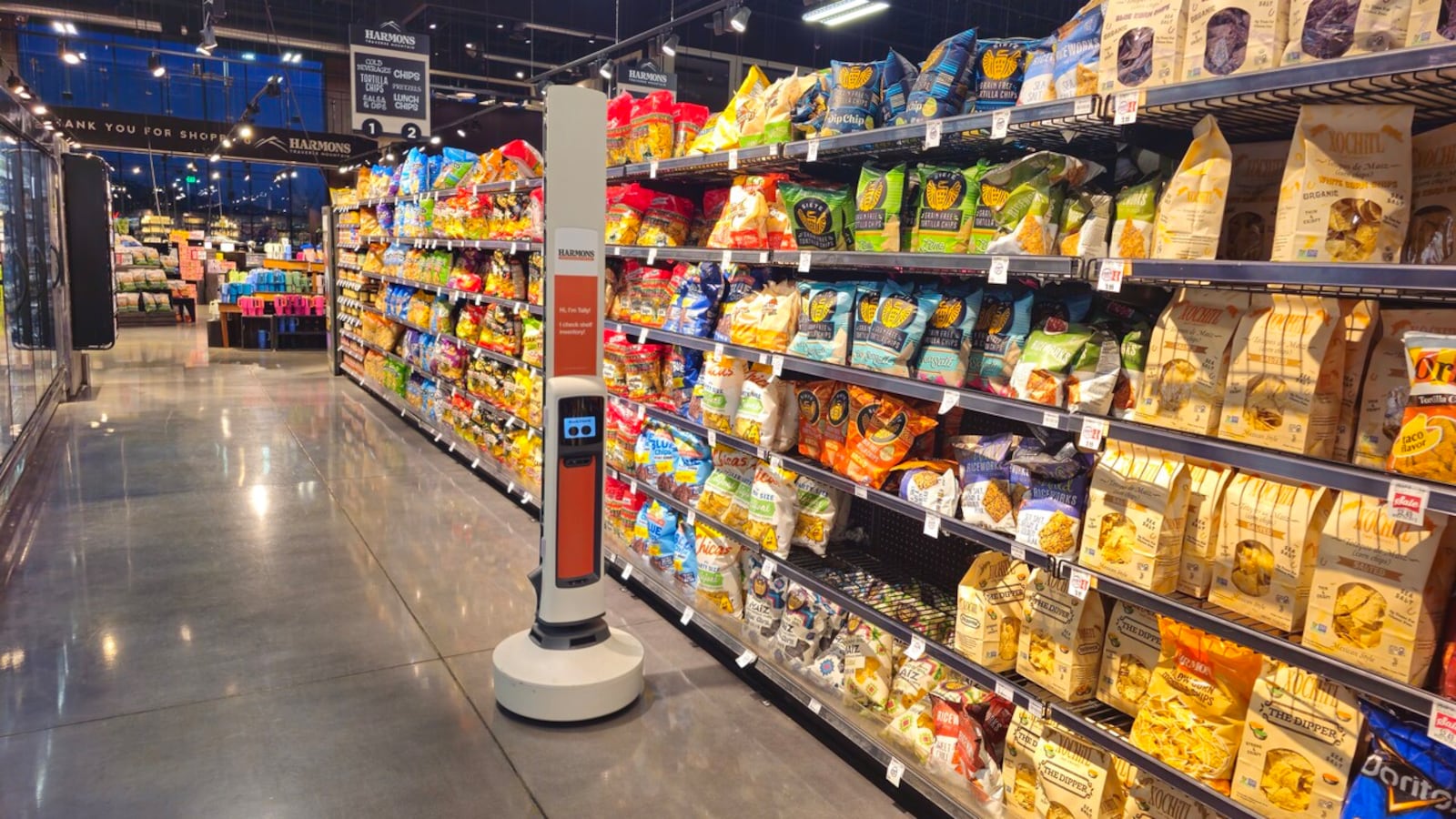This story appears in the May 2025 issue of Utah Business. Subscribe.
“Grocery is an industry that has not benefited from many new technologies,” says Scott Lewis, CEO and president of Harmons Grocery, when reflecting on how rarely his world is shaken by technological disruption.
Some sectors benefit from far less than their fair share of innovation, making them difficult to scale, because they historically require people to deliver analog goods or services. That may be why it is so surprising to see autonomous robots methodically roaming the aisles of several Utah Harmons stores.
“In this business, it’s important to know when an item is out of stock,” Lewis says. “Our stores carry around 60,000 SKUs [stock keeping units], and it’s been someone’s job to walk the aisles looking at each of them until they find anything that’s out of stock so we know to get that hole filled. It’s time-consuming and tedious, with lots of opportunities for mistakes. Nobody loves doing it, but we need this information.”
Meet your metal co-worker
For a decade, Lewis joked that what he needed was a Roomba with a GoPro attached to do the job. What he eventually found was Tally, an autonomous inventory robot created by Simbe.
“Tally is able to traverse a store multiple times a day to give us the insight we need much faster and more accurately than the traditional way,” Lewis says. “Now, instead of wasting time walking the aisles auditing, that individual is free to focus on getting things ordered or brought out from in back to fill those inventory holes.”
Tally is currently in use at five Harmons locations. But even if you shop regularly, you may not have spotted them.
“We’ve programmed it with some logic that influences when it operates in different parts of the store. It avoids certain areas when it knows or can sense they’re more likely to be busy,” Lewis says. “When it’s not working, it moves to its home station to charge, just like that Roomba I used to want.”
Beep boop better business
Lewis is quick to point out that Tally will not replace any human workers.
“Giving a task that people dislike and aren’t particularly good at [to a robot] makes everybody happy, especially the workers who can now spend their time doing more interesting and enjoyable things,” Lewis explains, adding that while doing its regular inventory scans, Tally is also making sure that an item’s price on the rack matches the price that comes up at checkout.
“It used to take a person weeks to price verify an entire store, and now we’re doing it several times each day,” Lewis says enthusiastically. “It’s fun to get some exciting new technology.”

Not your daddy’s harvester
Having spent the summers of his youth doing backbreaking work for the family sod farming business, Steve Aposhian was destined to put his skills as a mechanical engineer to use looking for a better way.
“Around 2010, some friends and I started designing replacement parts for my brothers’ sod harvesting machines, which were engineered creatively but lacked much by way of fundamentals. That worked out pretty well, so we turned it into a side business. Our customers liked our quality and encouraged us to start designing whole machines,” Aposhian says. “The only way to go from nothing to really competing in a well-established industry is to redefine what that industry is, and that was our approach.”
Aposhian’s harvester designs realized great gains in efficiency, speed and quality through clever automations, remote control and a heavy reliance on electric motors to supplement diesel engines.
“Our harvesters use two-thirds less fuel, guide themselves down the field and let one person do a job that used to take three,” Aposhian says.
Today, Aposhian is the CTO of FireFly Automatix, the world’s largest supplier of automated sod harvesters. But while sod farmers only harvest once a year, they mow twice a week. When Aposhian and his team realized this, he says, “That’s when we started developing our autonomy program, which is full driverless mowing.”
“We’ve learned that if you do manufacturing right, you can compete with anyone in the world."
— Steve Aposhian
Having successfully developed an autonomous mower for sod farms in 2022, FireFly Automatix released a model optimized for golf courses the next year. The new model solved two big problems for courses: 1) not wanting to interfere with play by mowing during the day, and 2) being unable to mow at night due to a lack of light and an abundance of ordinances that prohibit noisy diesel engines after dark.
“Our machines are fully electric and almost silent, and they don’t need light. Courses use them at 4:30 in the morning and the people living right on those fairways have no idea,” Aposhian says.
One key to FireFly Automatix’s success is a design philosophy that demands rapid prototyping and experimentation, which in turn requires manufacturing to take place locally.
“Raw steel comes in one side of our facility and finished machines come out the other,” Aposhian says, with a laugh. “When we control the manufacturing, we can be very nimble. We can have lower inventory levels because if a customer needs a spare part, we can build it. We can iterate on our designs and validate them the same day. We’ve learned that if you do manufacturing right, you can compete with anyone in the world.”

